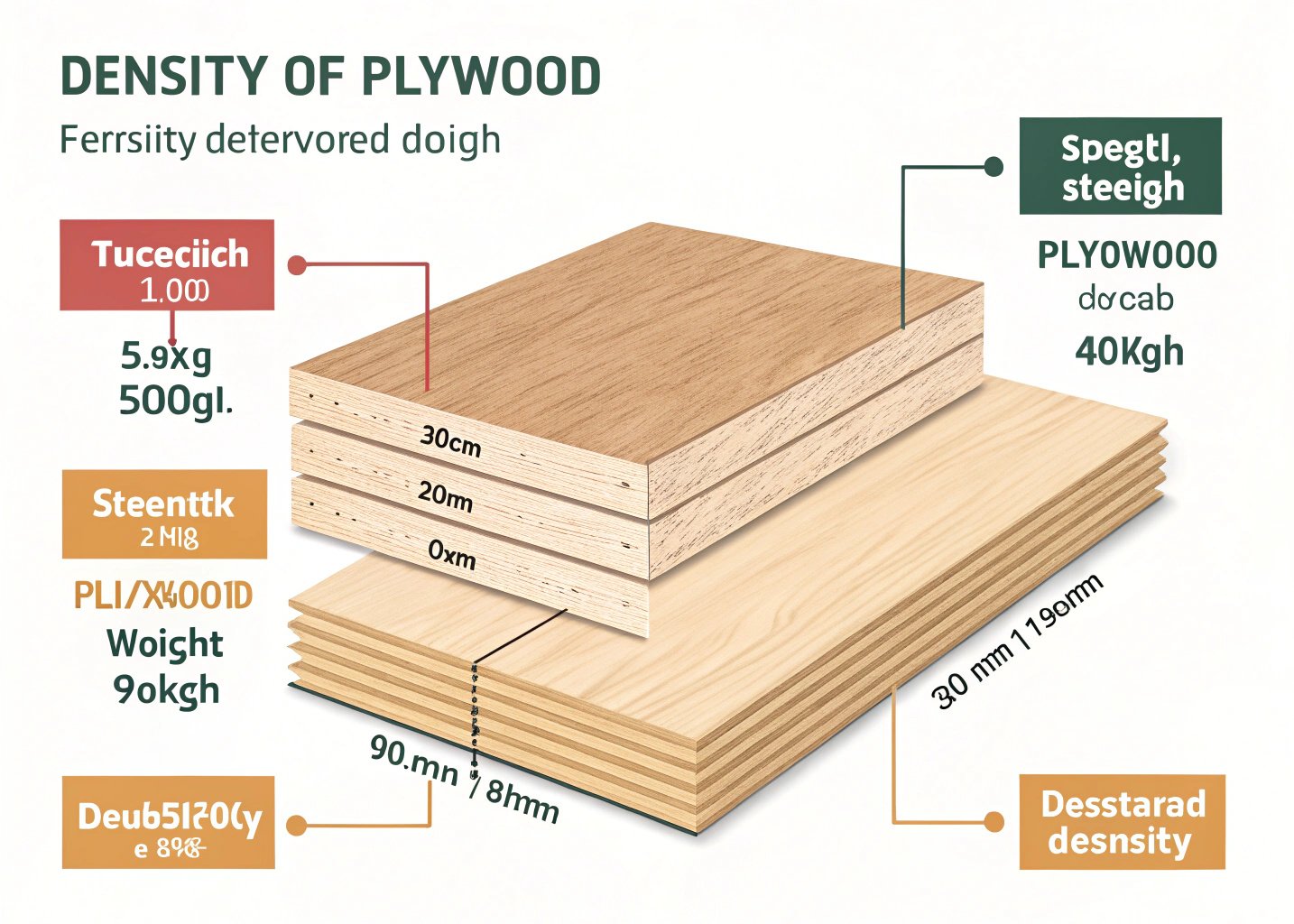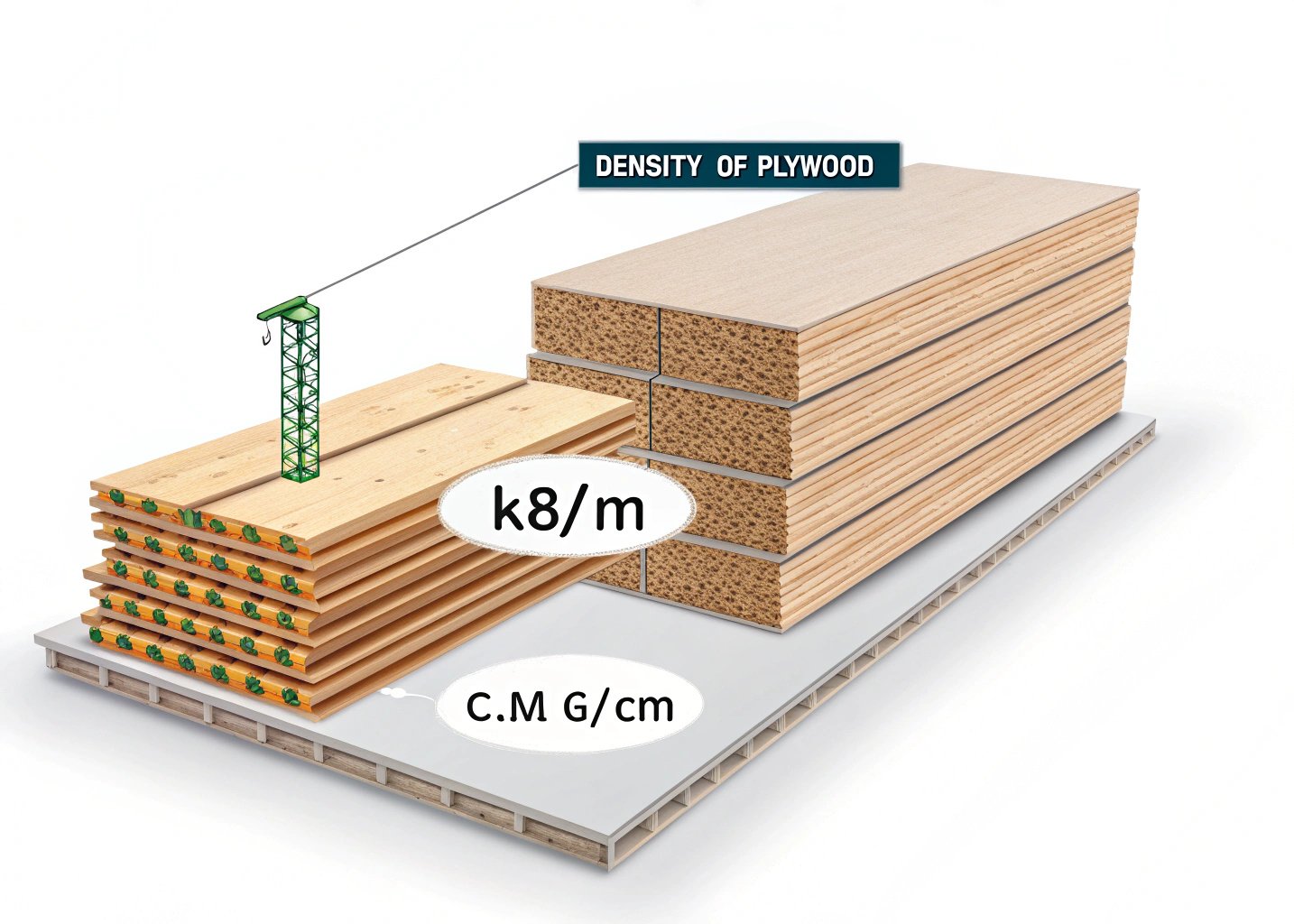
Understanding the density of plywood is important for determining its strength, weight, and suitability for different projects. Let’s explore how density affects plywood and why it matters for your next build.
The density of plywood typically ranges between 500 kg/m³ and 900 kg/m³, depending on the type of wood and construction method. The density influences the strength, weight, and durability of the plywood.
Whether you’re building furniture, flooring, or cabinets, knowing the density of plywood helps you select the right material for your project. In this article, we will break down what affects plywood density and how it impacts its performance.
✔
A higher density plywood is generally stronger and more durable, making it suitable for structural and heavy-duty projects.
✖
While higher density plywood tends to be stronger, certain low-density plywood types, like those made from softwoods, can still be durable for specific uses, especially in decorative or lightweight applications.
What Is Plywood Density?

The density of plywood refers to the mass of plywood per unit volume, typically measured in kilograms per cubic meter (kg/m³) or grams per cubic centimeter (g/cm³). The density of plywood plays a crucial role in determining its weight, strength, and overall performance. Higher density plywood is generally stronger and can carry more load, making it ideal for structural applications. Lower density plywood is lighter, which makes it easier to handle and more suitable for lightweight projects.
Factors Affecting Plywood Density
Several factors contribute to the overall density of plywood. These include:
Wood Type: The species of wood used to make plywood has a significant impact on its density. Hardwoods, like oak or maple, generally produce denser plywood, while softwoods, such as pine or fir, yield lighter plywood.
Number of Layers (Plies): Plywood is made by gluing several layers (plies) of wood together. More layers typically result in greater density, as the multiple layers add more mass to the board.
Glue and Resin Content: The type and amount of glue used to bond the layers also influence the density of plywood. Some glues are heavier or denser than others, especially those designed for outdoor or marine-grade plywood.
Moisture Content: Plywood with higher moisture content will have a higher density, as the moisture adds weight. However, once the plywood is dried, its density can decrease.
Manufacturing Process: Different plywood manufacturing processes can result in slight variations in density. Some processes may compress the plywood, making it denser, while others might allow for a more open structure.
Average Density of Different Plywood Types
The density of plywood varies depending on the material used and the specific grade of plywood. Below is a general guideline for the average density of various types of plywood:
| Plywood Type | Average Density (kg/m³) | Description |
|---|---|---|
| Softwood Plywood | 450 – 600 | Made from softwoods like pine, fir, and spruce. Lighter and cheaper. |
| Hardwood Plywood | 650 – 850 | Made from hardwoods like oak, birch, and maple. Stronger and more durable. |
| Marine Plywood | 650 – 800 | Typically made from a combination of hardwoods and softwoods. Water-resistant. |
| BWP/BWR Plywood | 650 – 850 | Boiling water-resistant plywood, used for outdoor applications. |
| Laminated Veneer Lumber (LVL) | 600 – 900 | Engineered plywood with high strength and consistent density. |
As you can see, the density range depends on the wood species and intended use of the plywood. Hardwood plywood tends to be denser and stronger, while softwood plywood is lighter and more cost-effective for general purposes.
How Density Affects Plywood Performance
The density of plywood directly impacts its performance in different applications:
-
Strength and Load-Bearing Capacity: Higher-density plywood is stronger and more capable of supporting heavy loads. For structural projects like flooring, roofing, or framing, denser plywood is essential to ensure safety and durability.
-
Weight: Lighter, low-density plywood is easier to transport and handle, making it ideal for furniture, cabinets, and other projects where weight is a concern. However, it may not be suitable for applications that require load-bearing strength.
-
Durability: Dense plywood typically has better wear resistance, making it more durable over time. It is less prone to warping and cracking under stress, which is especially important for outdoor applications or areas exposed to moisture.
-
Workability: Lower-density plywood is easier to cut, shape, and finish. This makes it a preferred choice for DIY projects and decorative items, as it is simpler to work with compared to high-density plywood.
How to Choose Plywood Based on Density
When selecting plywood for your project, consider the following factors related to density:
-
For Structural Use: If you need plywood for heavy-duty applications like flooring, shelving, or framing, opt for hardwood plywood or marine plywood with a higher density. These types of plywood will offer greater strength and stability.
-
For Lightweight Projects: If you’re building furniture or decorative items, lower-density softwood plywood will be sufficient. It’s easier to work with and less expensive.
-
For Outdoor or Moisture-Prone Areas: BWP (Boiling Water Proof) or BWR (Boiling Water Resistant) plywood with a medium to high density is ideal for projects exposed to moisture, as it resists water absorption and decay.
-
For Precision and Durability: For a project that requires fine craftsmanship, such as cabinetry or intricate designs, opt for high-density hardwood plywood for a smooth surface and added durability.
Conclusion
The density of plywood is a key factor in determining its suitability for various applications. Plywood density typically ranges from 500 kg/m³ to 900 kg/m³, depending on the type of wood and its intended use. Higher-density plywood is generally stronger and more durable, making it ideal for structural projects, while lower-density plywood is lighter and better suited for non-load-bearing furniture or decorative applications. By understanding how density affects plywood performance, you can choose the right plywood for your project, ensuring both strength and ease of use.
